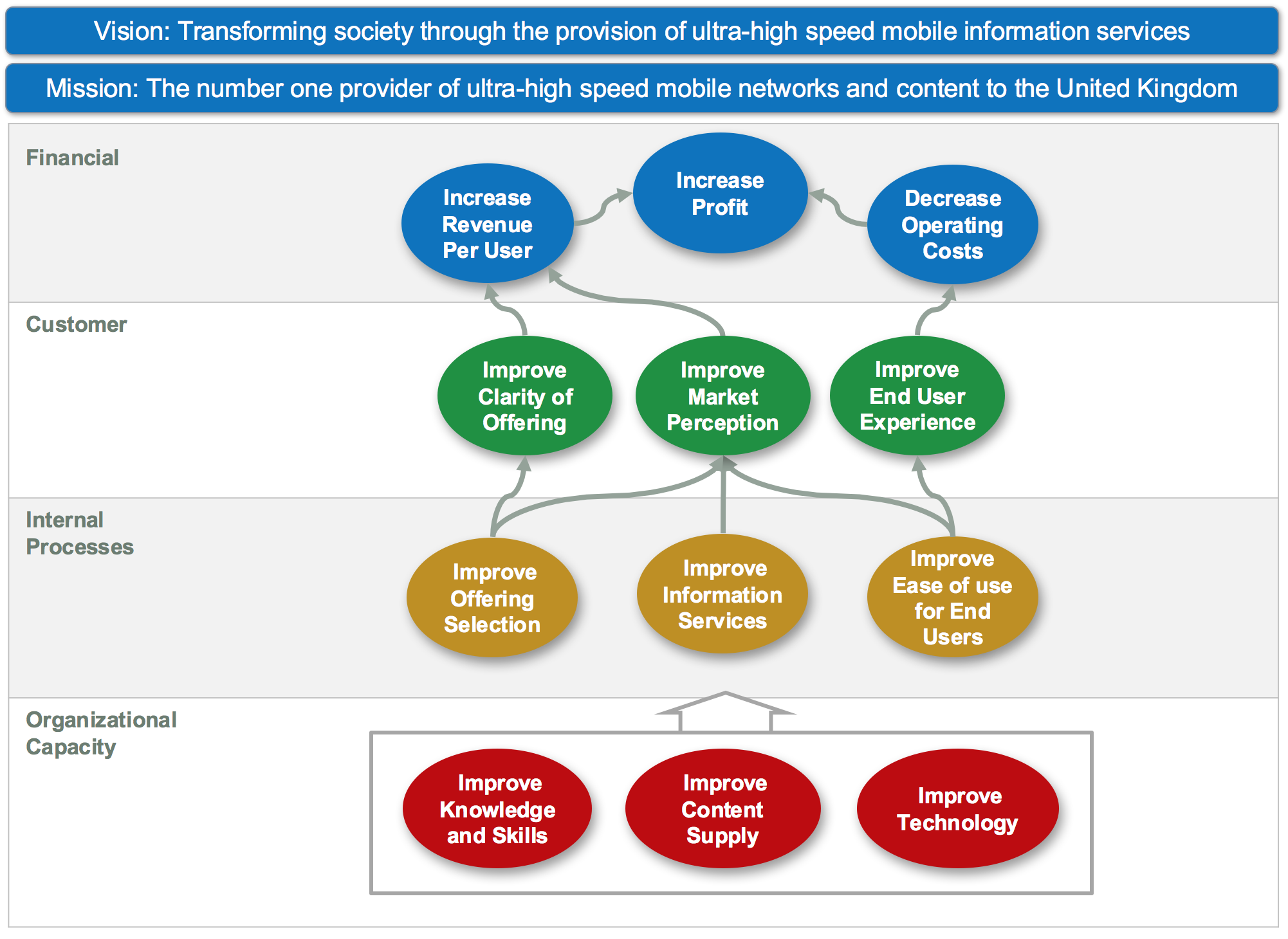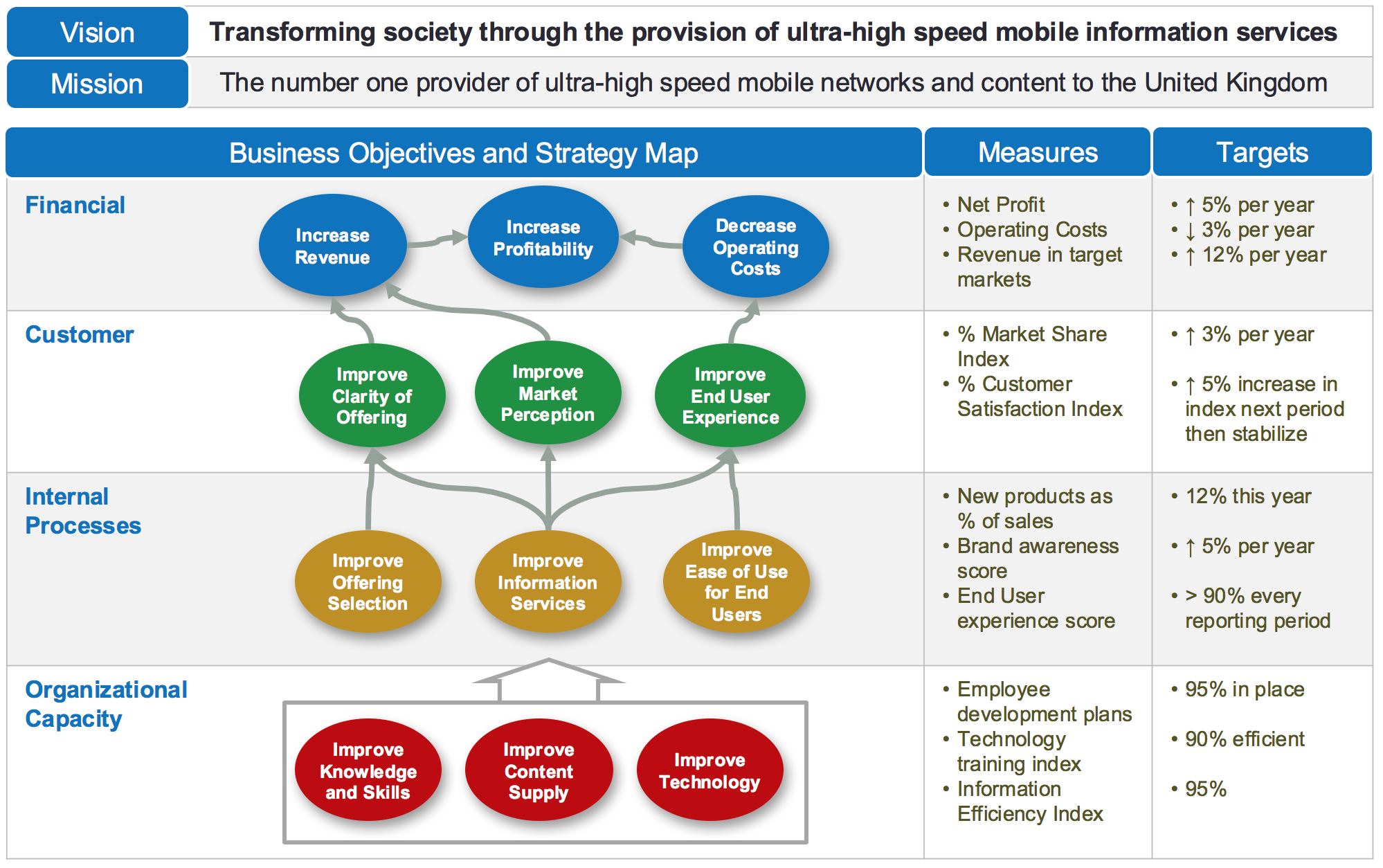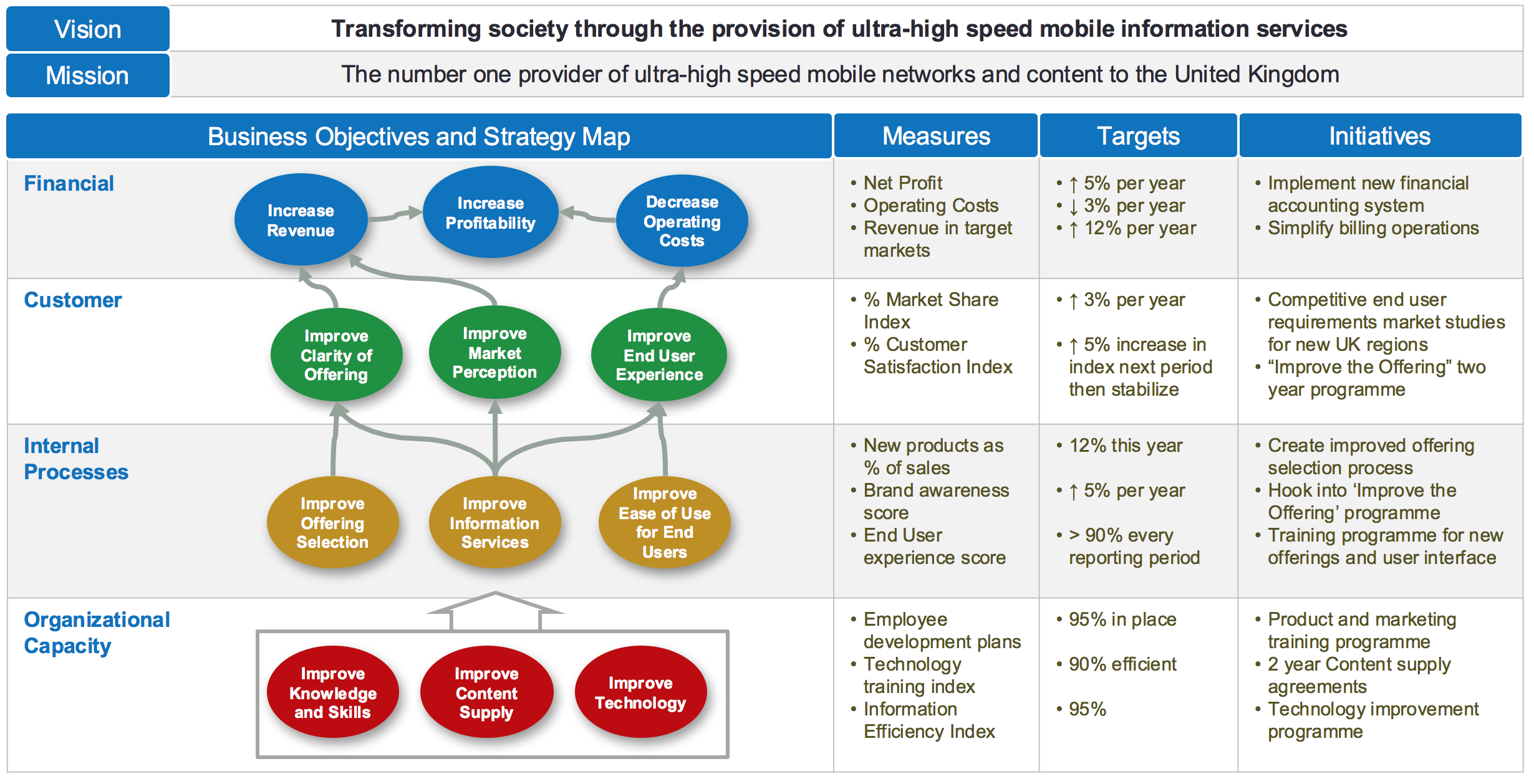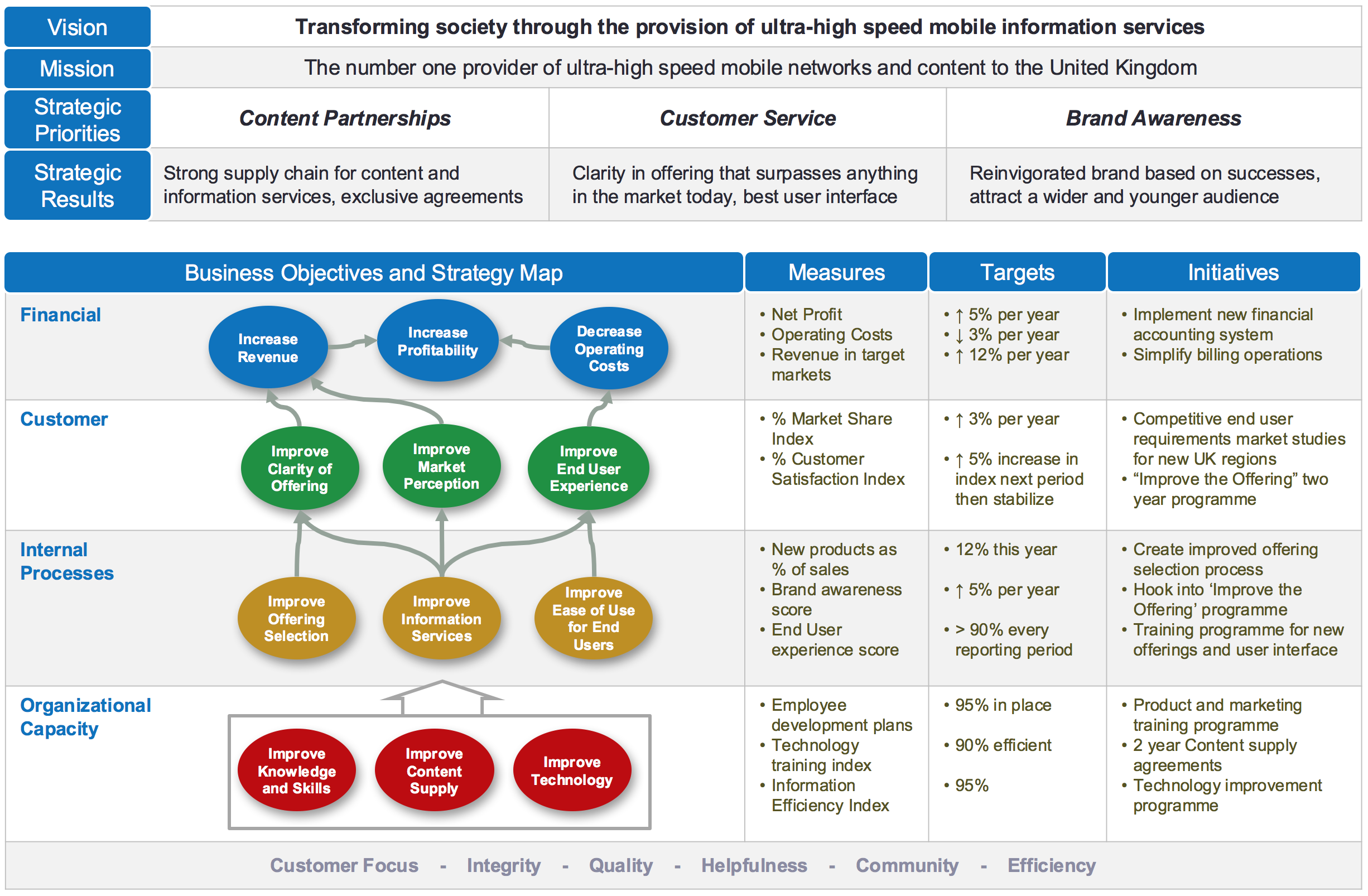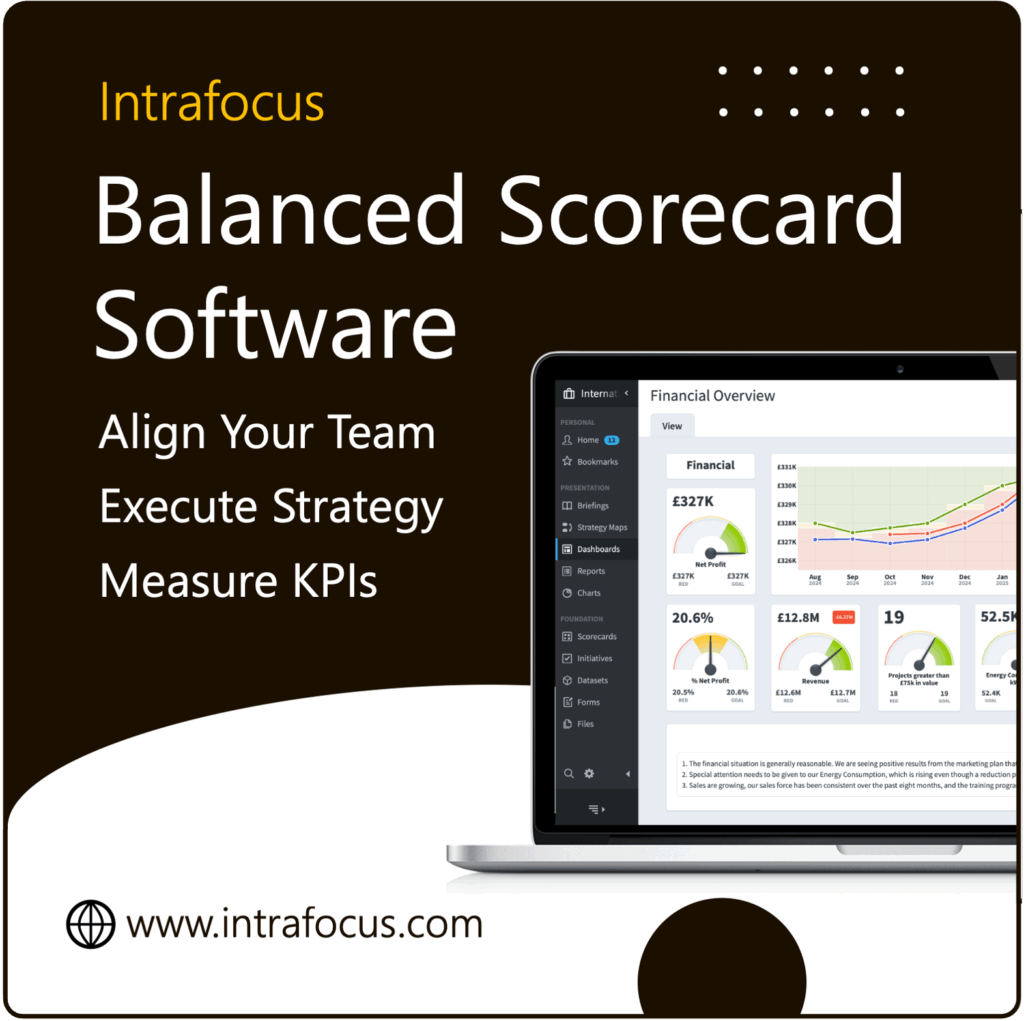Interest in the Balanced Scorecard (BSC) has steadily increased over the past few years. Executives have realised that ad hoc planning and strategy ‘away days’ don’t cut it in a world that demands clarity and alignment. They want a structured way to link vision to execution, and the Balanced Scorecard provides precisely that.
A recent review of 1,200 BSC studies found growing interest in adapting the Balanced Scorecard to new priorities such as sustainability, integrated reporting, and systems thinking. “Balanced Scorecard: Trends, Developments, and Future Directions, published 30 September 2023.”
Organisations are pushing the model forward, extending it to cover sustainability, Environmental, Social and Governance (ESG) metrics, and even AI-enabled performance tracking.
This renewed appetite explains why Balanced Scorecard remains so popular. A well-designed scorecard doesn’t just measure performance. On a single page, it shows how objectives, measures, and projects fit together to drive strategy.
From Vision to Strategy Map
Every Balanced Scorecard starts with clarity of intent. What is the organisation trying to achieve? The vision points to the long-term aspiration; the mission defines what the organisation does today. From there, objectives are created. They are specific statements that describe how to move from the present to the future.
The beauty of a strategy map is that it shows how those objectives connect. Improvements in infrastructure, people, or processes are not just operational tweaks. They are deliberate steps designed to lift customer satisfaction, which in turn drives financial performance. This cause-and-effect logic makes the Balanced Scorecard stand apart from simple KPI dashboards.
Take a look at the example strategy map below. You’ll notice how objectives are grouped into perspectives and layered so that internal improvements support customer outcomes, influencing financial success.
Organisations increasingly weave in sustainability goals or ESG measures here, ensuring the strategy reflects shareholder and stakeholder values.
A well-drawn strategy map is powerful because it communicates strategy at a glance. In one diagram, it answers the following questions: Where are we going? What matters most? How will one area of performance influence another?
Turning Objectives into Measures
Once objectives are clear, the next step is to measure progress. Without measurement, strategy risks becoming a wish list. The importance of connecting KPIs to Objectives must not be underestimated.
Each objective should have at least one KPI, sometimes two or three. But restraint matters. Cramming in ten measures for every objective leads to noise, not clarity. That’s why the “K” in KPI is so important. Only measure what is truly key to achieving the strategy.
For example, if the objective is to improve customer loyalty, the KPI might be net promoter score or customer retention rate. If the objective is to increase internal efficiency, the KPIs process cycle time or cost per unit might be appropriate. What matters is not the number of measures but their direct link to the objectives on the strategy map. The scorecard at this stage, might end up looking like this:
Today, many organisations are using AI-enabled tools to help refine this step. Instead of guessing which measures matter most, they can analyse historic data to highlight which KPIs best predict future outcomes. The principle remains the same: keep it focused, keep it relevant.
With measures and targets defined, the scorecard begins to take shape. It becomes more than a plan — it becomes a tool for objectively tracking success.
The Engine of Change
Objectives and measures define success, but they don’t deliver change on their own. That’s the role of projects and initiatives.
In the language of the Balanced Scorecard, initiatives are often called “the engine of change.” They are the actions that bring objectives to life. If an objective is to enhance employee skills, then the initiative might launch a training programme. If the objective is to reduce waste in production, the initiative could introduce lean manufacturing methods.
One of the most powerful aspects of the Balanced Scorecard is the order of the steps. Projects come last, not first. Too often organisations jump into activity without a clear link to strategy. The Balanced Scorecard flips this around: first decide the vision, then the objectives, then the measures, and only then define the projects. So the next stage might look something like this:
Modern approaches often combine this with agile project management. Initiatives are still tied directly to objectives, but they’re executed in shorter cycles, with room to adapt as results emerge. The Balanced Scorecard moves from aspiration to action. The vision is clear, the measures are in place, and the initiatives show exactly how the strategy will be delivered.
Scaling Up and Cascading
For smaller organisations, a single Balanced Scorecard can capture the whole strategy. But as organisations grow, things get more complex. A one-page scorecard still provides the big picture, but the detail needs to cascade through the business.
That’s where strategic priorities (sometimes called strategic themes) come in. These priorities break the vision into manageable parts. For example, a technology company might identify three priorities: innovation leadership, customer experience excellence, and operational efficiency. Each priority becomes a lens through which objectives, measures, and initiatives are defined.
This approach helps larger organisations avoid drowning in detail. Instead of trying to capture everything on one page, the scorecard cascades down. Divisions or departments create scorecards that align with enterprise-level ones. The logic remains intact: improvements in internal processes drive customer outcomes, which in turn fuel financial success, but now each part of the organisation can see its unique role in delivering that chain.
The integrated Balanced Scorecard example below shows how this looks in practice. You’ll see how strategic priorities, objectives, measures, initiatives, and even core values are all brought together into a coherent whole. The Balanced Scorecard is a system for aligning people across the entire organisation. Cascading balanced scorecards is dealt with elsewhere, suffice to say a final tier 1 balanced scorecard including strategic priorities, might end up looking like this:
Strategy on One Page
One reason the Balanced Scorecard has endured for more than thirty years is its simplicity. When well designed, it organises everything that matters onto a single page. The integrated view shows:
- Focus — the priorities that guide attention.
- Objectives — what needs to be achieved.
- Measures and targets — how success will be tracked.
- Initiatives — the projects that will deliver change.
- Core values — the foundation on which everything rests.
This combination provides more than a management tool. It’s a communication device. Senior teams use it to align decisions. Managers use it to focus resources. Employees use it to see how their work contributes to strategy. And stakeholders can see, at a glance, what the organisation is striving to achieve.
In practice, managing this level of information in spreadsheets or slide decks quickly becomes messy. That’s why many organisations use dedicated Balanced Scorecard software. Tools like Spider Impact automate reporting, track initiatives, and keep the entire strategy map live and accessible — turning the one-page view into a living management system.
The Balanced Scorecard
The Balanced Scorecard has proved resilient for good reason. Organisations today face shifting markets, new technologies, and rising expectations around sustainability and ethics. In this climate, leaders need more than financial results; they need a framework that connects vision to action, shows cause and effect, and makes strategy visible to everyone.
If your organisation is looking for a practical way to turn strategy into results, the Balanced Scorecard is as relevant today as it has ever been. Explore the examples above, download our Strategy Map and Balanced Scorecard Templates, and see how the framework can bring your strategy to life. For those ready to take the next step, consider using Spider Impact, the only software formally recommended by the Balanced Scorecard Institute, to manage your scorecard effectively.
Download more examples of templates here: Strategy Map Templates and Balanced Scorecard Templates

